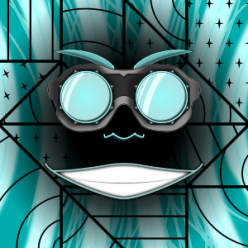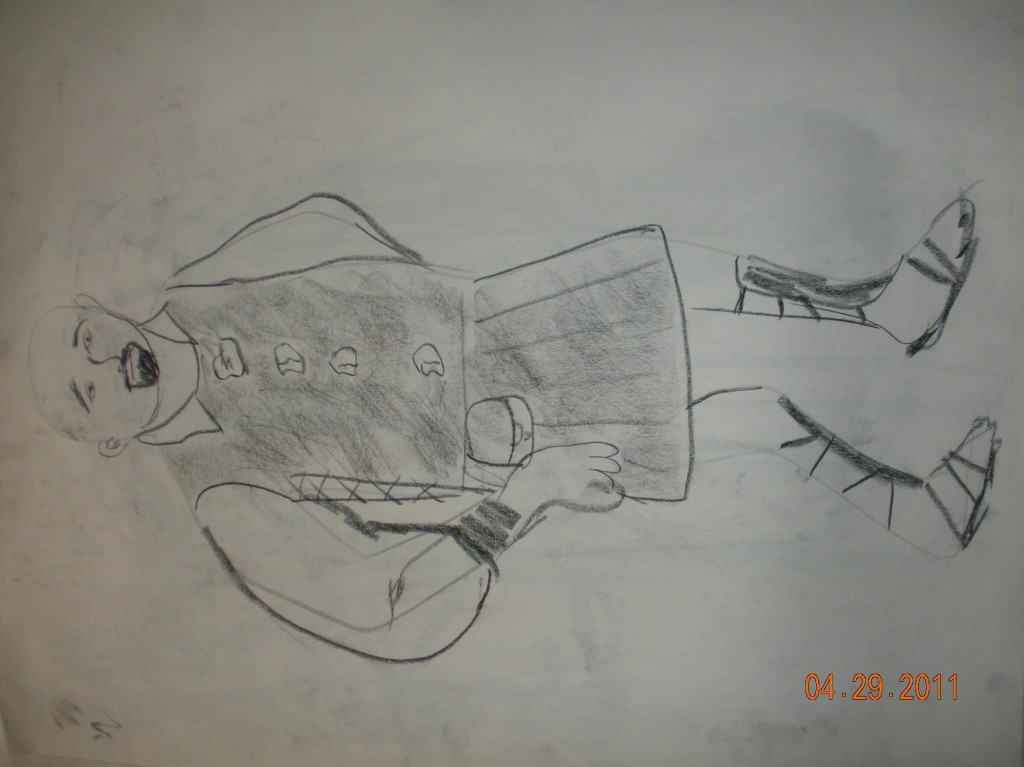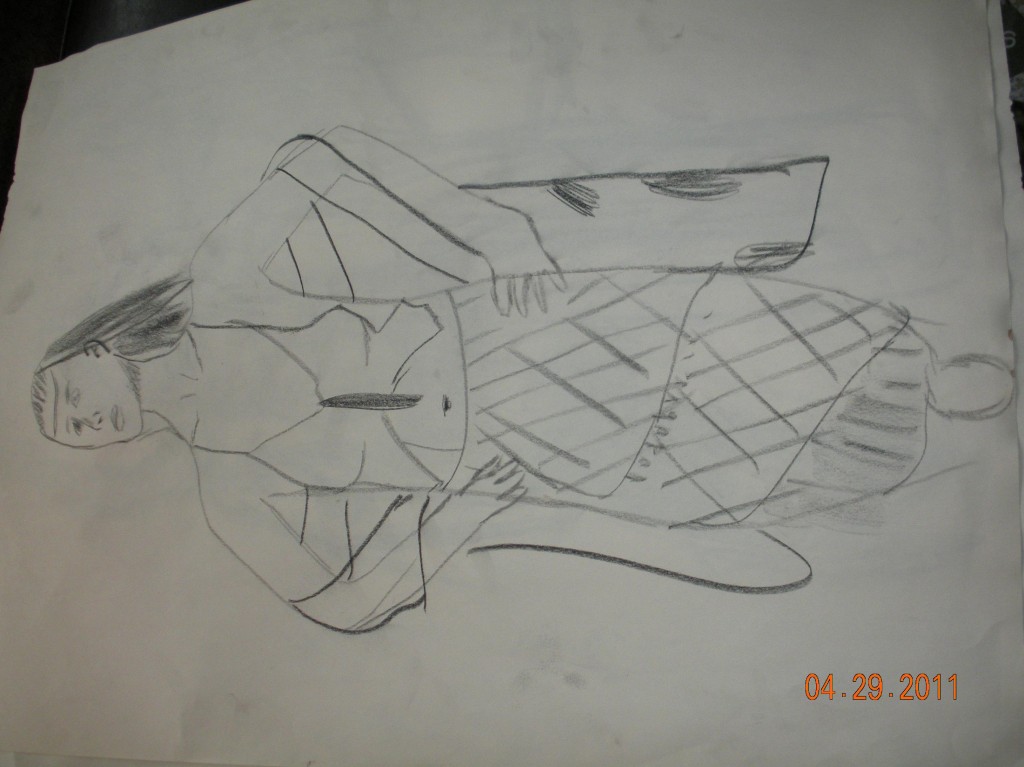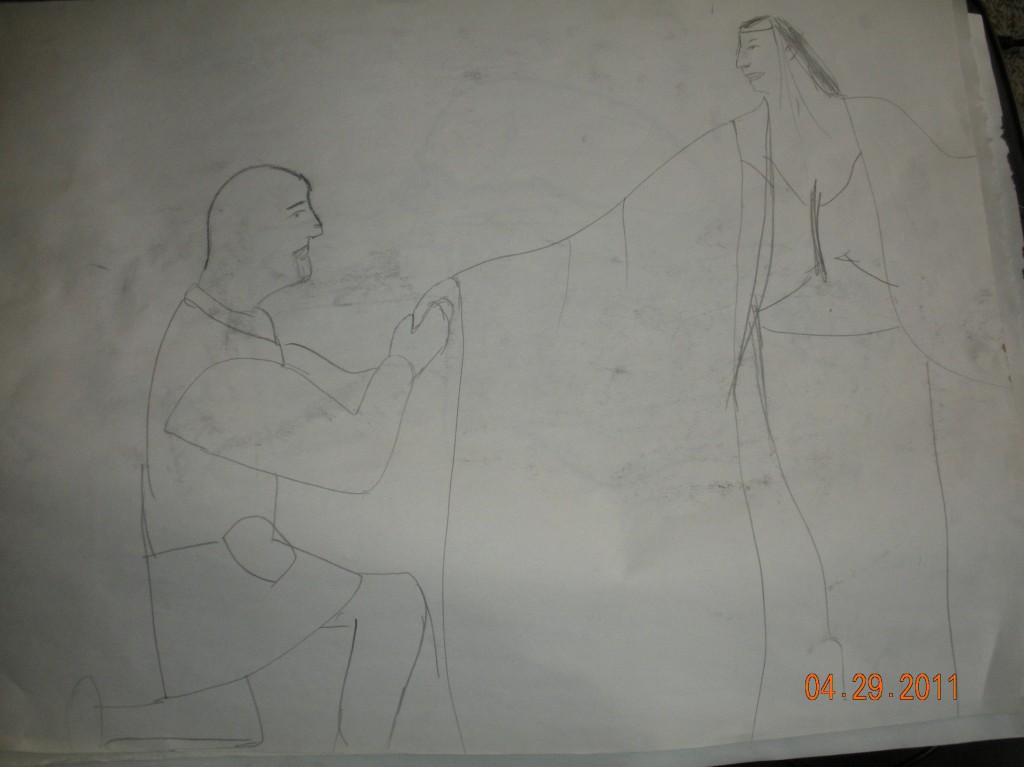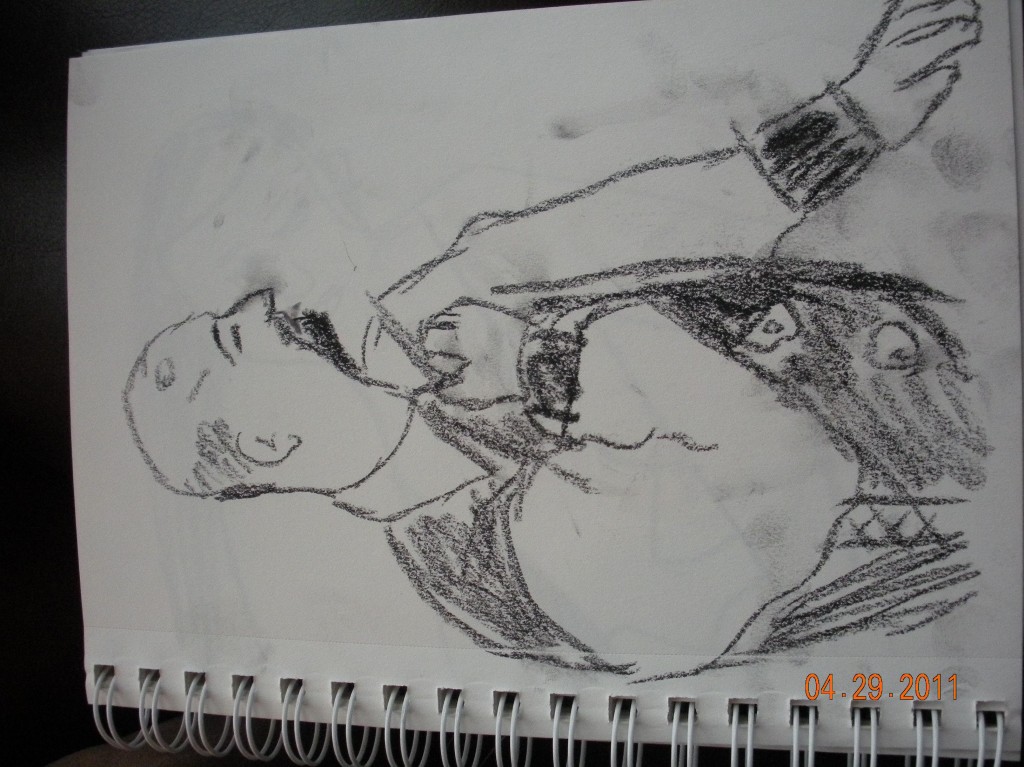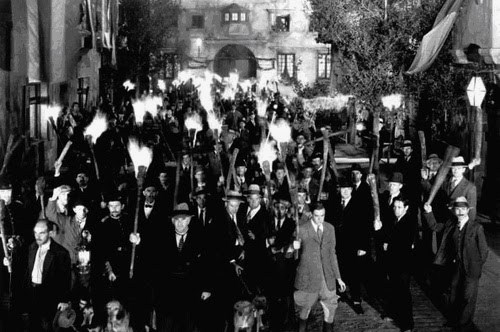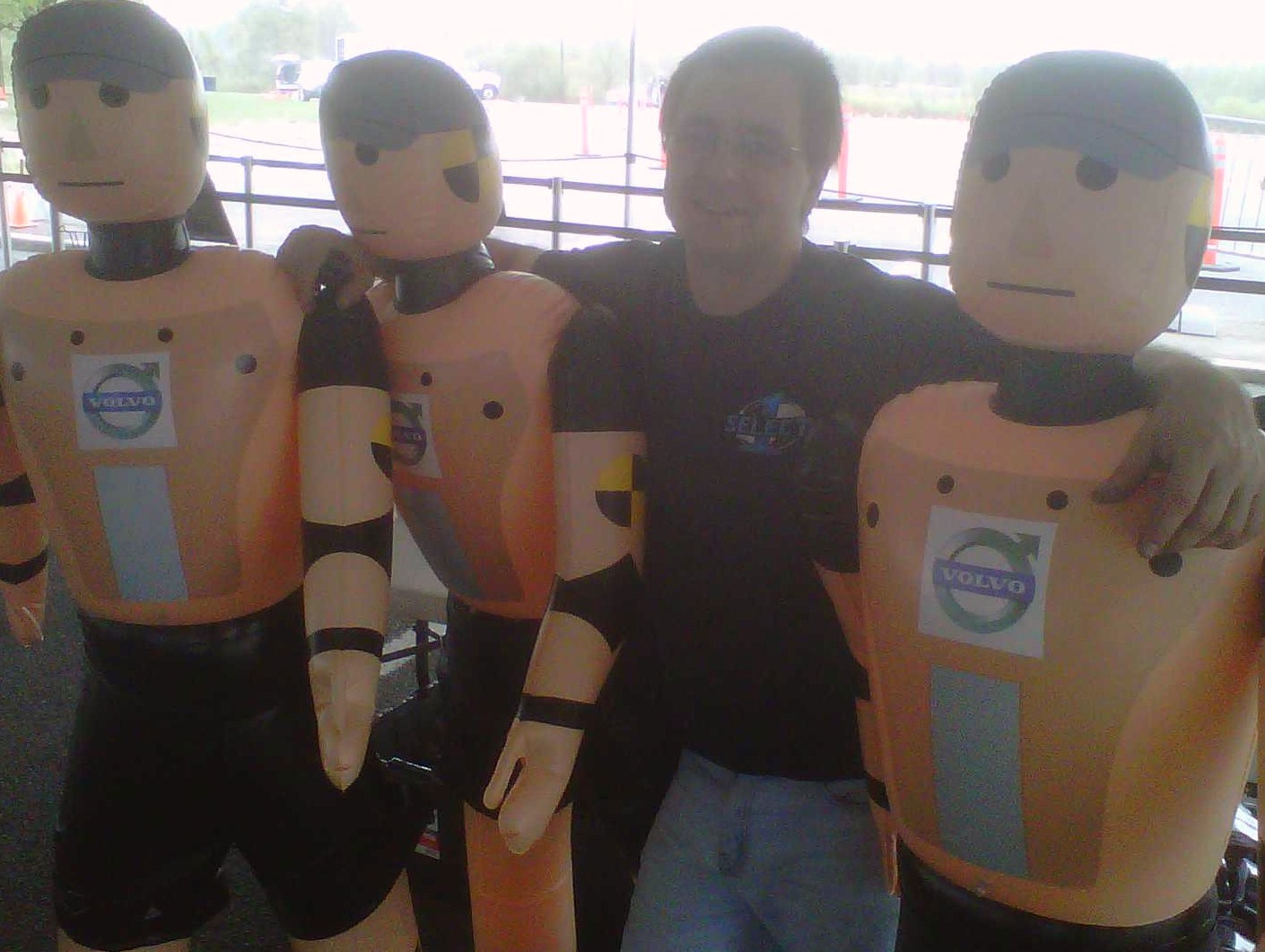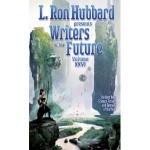A correction is in order for last months review. I called the leading Sci-Fi news outlet in the industry Lotus when every other person on the planet knows it’s Locus. Big mistake, won’t make it again.
The new year marks the beginning of the Alphabet Quartet contributions. Tim Pratt, Jenn Reese, Heather Shaw, and Greg Van Eekhout have won more awards, sold more books, and have appeared in more professional paying publications than my collective friends and my own overactive imagination could hope to accomplish combined. Every Wednesday a new letter of the alphabet graces DSF, (at least until they run out of letters) making it the first weekly serial in ezine history (I think). I have been eager to read them and have avoided the temptation of giving any a look in my emails, just incase they need to be read in order. Aside from this impressive quartet, I see other previously published DSF authors in this months issue. Should be a good one.
Roger Ebert once said, “I don’t review a movie based on what it’s about, but how it goes about it.” If I follow that same philosophy, this is the best story I’ve ever read. “Wrath of the Porcelain Gods” by Nicky Drayden (debut 1/3 and reviewed by Dustin Adams) is, word for word, perfect.
It’s written in 2nd person. The subject matter is generally considered vile. The narrator him/herself wonders why they’d taken up such a disgusting hobby. Why then such high praise?
The narrator has studied the excremental activities of all one hundred fifteen sapient species of Vero-Avalon station save one. The documentation and revelation thereof is the plot. The hilarity that ensues is the story. The answer to the question posed above can only be gleaned through understanding. To understand, one must not fight it. (you’ll see.)
Take five minutes out of your day and read this. If you don’t get it, that’s okay, it was only five minutes. However, if you do, you’ll be glad you did. Recommended
I delved into the author comments in hopes of shedding some light on the story itself, which was not sci-fi, a little confusing, and unsatisfying. I believe there should be a desire to read the author’s comment, not a need.
Unfortunately I can’t recommend this story. Which, by the way, is about one person in said society who takes a pill to induce pain (assumable) because they have a mental affliction. However, since I was given no indication of said mental state, all I got out of the story was someone ingesting a pain pill then passing out in the store.
“A” is the first in a series written by four accomplished authors. The story shows how much power Shakespeare has in the imagination of mankind, a power that brings life to his characters in their own reality. The mysterious man (a person whose identity you may be able to guess) has a gift that allows him to transport through time, space, and into the new realities. He is out to stop the reality that will form with Shakespeare’s play.
I have avoided reading any of these tales when they appeared in my email box, not knowing if they should be read in order. I have no idea how the other ones will turn out but act one was fabulous. The author (or authors) captured a skittish Shakespeare, and the rest of a complete cast, rather well. I just loved where they took this tale and how it ended. Recommended
A simple tale told well. I have read a few of Mr. Stone’s stories and have been impressed with the simplicity of his stories. In”Waiting for Raymond” a young beautiful lady–Dee–is preparing for a night out and her preparations are being observed by a poltergeist that haunts her apartment. After putting the finishing touches to her appearance, she realises she is going to be let down by her boyfriend, Raymond, who is always late for everything. He won’t answer his cell phone.
I thought this was well written, simple and effective, but not mind-blowing. I liked it, though, but not as much as another of his more recent DSF stories, “The Girl Who Asks to Much”.
“Bit Storm” is the longest story DSF has published in months. The story line is centered on Diff. He is in the middle of a hectic couple of days, trying to upload a crucial program with a whining AI to deal with, all while trying to please a pushy girlfriend. SickDevil is a new age anarchist. He ruins an online game Diff and his friends enjoy, then gives his new friend a nano cat for an apology. It isn’t long before all the nano technology begins to react oddly (what a surprise).
I could go into more detail on this story but it would be easier for me to be blunt. I did not like it. The present tense narration gave this a feeling of a movie script, which was fitting considering the plot came off like a bad sci-fi horror flick. Why Diff would accept anything from a person he knew had a head full of loose screws I could never figure out. What was worse SickDevil never suffered any repercussions for his multiple futuristic felonies. This story just didn’t fit my tastes.
The story isn’t anything but a readers guide to following a hoarder around as he garbage picks. We view each item as Joshua contemplates its merits, and trust me, everything he comes across can be defined simply as junk. The story takes a turn when a strange cat appears to strike up a conversation with Joshua; so odd and baffling I suspect it was inserted to give this piece its speculative element.
Lavie Tidhar is an enigma to me. His writing is superb. The flea market is so vivid and it is so easy to fall into Joshua’s perspective, a rare gift he has. But, I never get what his stories are about. Often Lavie’s plots seem to go nowhere. Perhaps his themes are beyond the capability of my mortal mind to comprehend.
I’m sorry but I failed to grasp the point of this well written story.
A broken dental drill bit in Sally’s mouth gives her the ability to hear aliens in “Bit by Bit” by Karina Fabian (debut 1/11). Poor Sally isn’t sure if it’s the drugs that are making her hallucinate. Her dental insurance adjuster is sure a mental health provider is what she needs. A strange man wearing an aluminum hat gives her some relief. Finally a customer believes her and helps her find an explanation. The line between crazy and savior can be so thin.
“Bit by Bit” is a ‘bit’ fun. The story follows a staggered journey of a woman who hears voices. The events in her life and how she deals with them, gives this a tale a light but jumpy feeling to it. Ms. Fabian chooses not to explore Sally’s feelings and actions during this odd event but rather reports the odd things she does as if it’s a vague log.
I thought the story was fine but what I enjoyed more were Ms. Fabian’s comments on the inspiration for the story. Far more entertaining, in my opinion.
Act two of the Alphabet Quartet was a disappointment compared to its opening one. Jonas is sensible but a coward in the eyes of this reader. I feel as if I was robbed of a greater adventure.
This story is set during Halloween and would have been great if it was posted that week. I can understand why the editors wouldn’t want to wait 10 months to post it, which is too bad because it scored well on the creepy meter. A well-done ghost story.
Akorsa is an oracle who hungers for her next song and the soul of the one who sings it in “A Song Never Tasted” by Barbara A. Barnett (debut 1/14). She is one of two supernatural beings left from a long ago time when mortals would praise the oracles as conduits to the gods. Now seen as devils, Akorsa must hide in the bushes and wait to feed on songs gone stale. Then a young woman sings verses Akorsa has believed were lost to time. The beauty of the song is such that Akorsa wishes to spare this angel, but the other remaining oracle, Neashern, has no intention of going hungry when the rich flavor of an old song is there to feed upon.
“A Song Never Tasted” is a tale which gradually evolves into a ghoulish love story. Akorsa fights two battles, one with Neashern and the other with her own vampire-ish hunger. Hirneen is the 16-year old girl who sees visions of the oracles and is blessed with the songs the oracles hunger for. After saving Hirneen from Neashern, Akorsa forms a relationship with the girl and begins to fall in love with her. Akora hungers for Hirnnen’s lips and the taste of the song that comes from them, yet resisting the hunger of its melody, which will kill Hirneen if she dares to feast on it.
This tale left me disturbed. Akorsa’s internal battle gave this story a creepy pedophilic metaphorical feel. Her actions seemed a lot like how an adult would react when they have an attraction to a minor, even when they know those feelings are wrong (It didn’t help when the author spelled out Hirneen’s age). I’m sure that wasn’t Ms. Barnett’s intention and I am not in anyway implying that she was making any such statement, but nevertheless, a story where a really old person preys on a naÃ�’ �ve girl was one that was not for me.
The premise to “The Voynich Variations” is based on the ‘Voynich Manuscript’, an incomprehensible book written in the 15th century and believed to be a work of encrypted genius. The protagonist believes he has discovered the books secret, a brilliantly disguised musical score. Eager to hear the melody for himself, the protagonist deciphers the score and reveals its secret.
Quite an inventive tale. I had to Wikipedia the legendary script to reacquaint myself with the manuscript. I found this tale compelling and the ending worthy. A nice work of flash.
“Family Photo” is a tale of mother who wants to right a wrong. She puts on a brave face for a husband who was injured when their boy first became a monster. The premise of this story left me baffled. So I don’t ruin it for those who haven’t read it, I won’t go into why but I really do question Karlen’s choices. I don’t know what she really fears at this point.
The stories protagonist’s motives left me scratching my head for this piece.
“C” is a Pandora’s Box type of theme. We know so much about the protagonist’s history but so little about her. So little she became more of a mystery to me than the odd creature in the crate. There was no hard punch to this lettered story but it still carried my interest. I liked C better than B but it couldn’t compare to the earlier vowel.
“Automatic Selection” has the feeling of a man hiding an obsessive disorder with the advanced technology of the future. The truth of what it is he is hiding proves to be far more of a social disability. The reveal of this twist was well placed but came off as an information dump. Not a bad idea but I preferred an ending that flowed as smoothly as the first 80% of the story.
“Standing Next to Heaven” is a tale millions of people could identify with. The story is told by an older sister who feels slighted and ignored and takes her ill feelings out on her poor sister (as siblings often do). Heaven has a gift that hardly sounds like a blessing. You get the idea the only thing Shelia is envious of is the attention her sister receives. Heaven is like a child with a fatal illness or disability. Shelia has become her caretaker and must follow rules concerning Heaven. Shelia comes off as cruel; not a sadistic type of cruelty, but a meanness all siblings have been guilty of, been a victim of, or both.
This story is the type of speculative tale that says more about the type of people we are today than about what we will be like in the future. I can’t fathom a person who couldn’t identify with the two little girls in this piece but can imagine a person or two that would be uncomfortable with the plot. Shelia is at a crossroads in their relationship, at the stage when she quits being the tormentor and becomes the protector.
“Standing” is not the type of tale that will leave you in awe. It’s a smooth read but not a page-turner, a Twilight Zone tale written as an after-school special. It doesn’t get my full-fledged recommendation but it is one I found great.
“Not with a Bang” is not your typical end of the world story. The government has set up a disinformation help line in an effort to keep a public calm. Elizabeth has stock answers and a book to assign a non-fatal illness to match the symptoms a sick caller has. It’s a unique idea, not very plausible in my opinion but still entertaining.
“D” was an unsatisfying letter for me. The story felt like an opening to a much larger story. Nothing much happened but you get the feeling much would if the story was allowed to evolve.
I thought the story was well-written and a very smooth read. I enjoyed the glance it allowed me into to a world of sky-ships and pirates. I saw elements of the twist before it happened, but perhaps that was only my writer’s eye spotting the foreshadowing.
A nice read.
“On Paper Wings” follows Shiyo’s life from a young girl to an emerging adult. The village in which she lives is isolated and under constant siege from dark and deadly demons. Hunters are on constant guard from the monsters. Shiyo lives alone with her mother and wants to know what she wished for. Her mother declines to answer but promises she will know one day. Shiyo uses her wishes to fill her most important needs of the time. But such as life is, tragedy changes everything, and helps shape the woman she comes to be, and of the wishes she will make.
Ms. Sonata wrote a very engaging character. Shiyo is convincing as a girl who evolves with the events that shape her world. The rules of the wish is what makes this story so compelling. Is losing your earlier wish worth making another? Depends upon the wish. The big mystery of Shiyo’s mother’s wish ended up being no mystery at all. Much of the story was set up for a big finish of a great reveal but there was only one possibility of what the reveal could be, which made the ending almost pointless (almost). Nevertheless the writing and pacing of an unnaturally long story for DSF made this story a worthwhile read.
“Jade Dragon” is based on a real life boy Ms. Li encountered in China. The lad’s hard life inspired her to write this short story. This so-so tale became special when I read Ms. Li’s comments about the encounter and could feel how moved she was when I read her comments. How sad it must have been for her. I hope the boy fortunes improved and he ended up living a prosperous life.
Another fine month for DSF. I would like to congratulate Jon and Michele for receiving an honorable mention for best new magazine in the Million Writers Award. There were several magazines who earned the honor but I think the actual award was between the winning publication (Lightspeed) and DSF all along. Hard to beat an editor who has had a lifetime of achievement as John J Adams has, especially when your magazine debuted in the fall. I could make an argument on why DSF was more deserving but I do find Lightspeed solid and entertaining.
Congrats to the four DSF authors who received honors in the MW awards. Of the 3 I reviewed I liked “Out of the Box” the most. Well-written and compelling but I doubt it would have made my top ten for the year (a lot of good stories).
Daily Science Fiction January 2011
“Wrath of the Porcelain Gods” by Nicky Drayden
“Rx” by Jacquelyn Bartel
“A is for Arthur” by The Alphabet Quartet
“Waiting for Raymond” by Eric James Stone
“Bit Storm” by Lancer & Shelli Kind
“The Junk Artist” by Larvie Tidhar
“Bit by Bit” by Karina Fabian
“B is for Banyan Tree” by the Alphabet Quartet
“Late Homework” by James Van Pelt
“A Song Never Tasted” by Barbara A. Barnett
“The Voynich Variations” by Edoardo Albert
“Family Photo” by Elena Gleason
“C is for Crate” by the Alphabet Quartet
“Automatic Selection” by Victoria Podmajersky
“Standing Next to Heaven” by Terra LeMay
“Not with a Bang” by Michelle Ann King
“D is for De Gustibus” by the Alphabet Quartet
“…And a Bottle of Rum” by Melissa Mead
“On Paper Wings” by Victoria Sonata
“Jade Dragon” by Shelly Li
A correction is in order for last months review. I called the leading Sci-Fi news outlet in the industry Lotus when every other person on the planet knows it’s Locus. Big mistake, won’t make it again.
The new year marks the beginning of the Alphabet Quartet contributions. Tim Pratt, Jenn Reese, Heather Shaw, and Greg Van Eekhout have won more awards, sold more books, and have appeared in more professional paying publications than my collective friends and my own overactive imagination could hope to accomplish combined. Every Wednesday a new letter of the alphabet graces DSF, (at least until they run out of letters) making it the first weekly serial in ezine history (I think). I have been eager to read them and have avoided the temptation of giving any a look in my emails, just incase they need to be read in order. Aside from this impressive quartet, I see other previously published DSF authors in this months issue. Should be a good one.
Roger Ebert once said, “I don’t review a movie based on what it’s about, but how it goes about it.”
If I follow that same philosophy, this is the best story I’ve ever read. Wrath of the Porcelain Gods by Nicky Drayden (debut 1/3 and reviewed by Dustin Adams) is, word for word, perfect.
It’s written in 2nd person. The subject matter is generally considered vile. The narrator him/herself wonders why they’d taken up such a disgusting hobby. Why then such high praise?
The narrator has studied the excremental activities of all one hundred fifteen sapient species of Vero-Avalon station save one. The documentation and revelation thereof is the plot. The hilarity that ensues is the story. The answer to the question posed above can only be gleaned through understanding. To understand, one must not fight it. (you’ll see.)
Take five minutes out of your day and read this. If you don’t get it, that’s okay, it was only five minutes. However, if you do, you’ll be glad you did.
Recommended
In the Author Comments section of Rx by Jacquelyn Bartel (debut 1/4 and reviewed by Dustin Adams), Ms. Bartel ponders what a society would be like if it used physical pain to treat mental illness. I can’t help but wonder how such a society would evolve considering this philosophy has been proven not to work by the mental institutions of old.
I delved into the author comments in hopes of shedding some light on the story itself, which was not sci-fi, a little confusing, and unsatisfying. I believe there should be a desire to read the author’s comment, not a need.
Unfortunately I can’t recommend this story. Which, by the way, is about one person in said society who takes a pill to induce pain (assumable) because they have a mental affliction. However, since I was given no indication of said mental state, all I got out of the story was someone ingesting a pain pill then passing out in the store.
At the end of his life, William Shakespeare has completed his greatest work in A is for Arthur by The Alphabet Quartet (debut 1/5). Will has worked over a year on “Arthur”, a tragedy of the legendary king and his mythical Camelot court. Now a mysterious man from a forgotten time has come to take it from him. Will knows to surrender his play would be to rob generations to come of his greatest of masterpieces, but the stranger aims to show him how releasing to the public it will be an even greater tragedy.
“A” is the first in a series written by four accomplished authors. The story shows how much power Shakespeare has in the imagination of mankind, a power that brings life to his characters in their own reality. The mysterious man (a person whose identity you may be able to guess) has a gift that allows him to transport through time, space, and into the new realities. He is out to stop the reality that will form with Shakespeare’s play.
I have avoided reading any of these tales when they appeared in my email box, not knowing if they should be read in order. I have no idea how the other ones will turn out but act one was fabulous. The author (or authors) captured a skittish Shakespeare, and the rest of a complete cast, rather well. I just loved where they took this tale and how it ended.
Recommended
Waiting for Raymond by Eric James Stone (Published Jan 6th, 2011 and reviewed by Anonymous)
A simple tale told well. I have read a few of Mr. Stone’s stories and have been impressed with the simplicity of his stories. In ‘Waiting for Raymond’ a young beautiful lady–Dee–is preparing for a night out and her preparations are being observed by a poltergeist that haunts her apartment. After putting the finishing touches to her appearance, she realises she is going to be let down by her boyfriend, Raymond, who is always late for everything. He won’t answer his cell phone.
The poltergeist is the kind soul and tries to help Dee anyway it can…
I thought this was well written, simple and effective, but not mind-blowing. I liked it, though, but not as much as another of his more recent DSF stories, ‘The Girl Who Asks to Much’.
Diff gets reacquainted with a college colleague, he would rather avoid in Bit Storm by Lancer & Shelli Kind (debut 1/7). The programmer has a needy AI companion, a demanding girlfriend, and a nano created artificial hand. Jack, his AI, wants a cat. Zoe, his girl, is pushing him to go to a Halloween party. While leaving his office, he runs into SickDevil, a college acquaintance who was kicked out of school. SickDevil is brilliant but has an anti-social attitude that many find odd. SickDevil appears to like Diff, even giving him a nano cat for Jack as a gift. Shortly after, Diff’s nano hand starts to ache, something it has never done before.
“Bit Storm” is the longest story DSF has published in months. The story line is centered on Diff. He is in the middle of a hectic couple of days, trying to upload a crucial program with a whinning AI to deal with, all while trying to please a pushy girlfriend. SickDevil is a new age anarchist. He ruins an online game Diff and his friends enjoy, then gives his new friend a nano cat for an apology. It isn’t long before all the nano technology begins to react oddly (what a surprise).
I could go into more detail on this story but it would be easier for me to be blunt. I did not like it. The present tense narration gave this a feeling of a movie script, which was fitting considering the plot came off like a bad sci-fi horror flick. Why Diff would accept anything from a person he knew had a head full of loose screws I could never figure out. What was worse SickDevil never suffered any repercussions for his multiple futuristic felonies. This story just didn’t fit my tastes.
Joshua searches for his personal diamonds amongst the mountains of rough in The Junk Artist by Larvie Tidhar (debut 1/10). He is one of many pickers checking the discarded trash of the Jaffra flea market, scooping up broken toys and obsolete gadgets the street vendors toss aside. Each item he sees as its own work of art, even when their relevant usage is in question. This smelly, depressed area is but a slice of heaven for Joshua.
The story isn’t nothing but a readers guide to following a hoarder around as he garbage picks. We view each item as Joshua contemplates its merits, and trust me, everything he comes across can be defined simply as junk. The story takes a turn when a strange cat appears to strike up a conversation with Joshua; so odd and baffling I suspect it was inserted to give this piece its speculative element.
Larvie Tidhar is an enigma to me. His writing is superb. The flea market is so vivid and it is so easy to fall into Joshua’s perspective, a rare gift he has. But, I never get what his stories are about. Often Larvie’s plots seem to go nowhere. Perhaps his themes are beyond the capability of my mortal mind to comprehend.
I’m sorry but I failed to grasp the point of this well written story.
A broken dental drill bit in Sally’s mouth gives her the ability to hear aliens in Bit by Bit by Karina Fabian (debut 1/11). Poor Sally isn’t sure if it’s the drugs that is making her hallucinate. Her dental insurance adjuster is sure a metal health provider is what she needs. A strange man wearing an aluminum hat gives her some relief. Finally a customer believes her and helps her find an explanation. The line between crazy and savior can be so thin.
“Bit by Bit” is a ‘bit’ fun. The story follows a staggered journey of a woman who hears voices. The events in her life and how she deals with them, gives this a tale a light but jumpy feeling to it. Ms. Fabian chooses not to explore Sally’s feelings and actions during this odd event but rather reports the odd things she does as if it’s a vague log.
I thought the story was fine but what I enjoyed more was Ms. Fabian’s comments on the inspiration for the story. Far more entertaining, in my opinion.
Jonas loves climbing the Banyan Tree with his friend, Tabby in B is for Banyan Tree by the Alphabet Quartet (debut 1/12). The tree is a real jungle gym, enormous and full of adventure. He follows his friend while playing ‘explorer’, until Tabby disappears. Tabby insists he should have stayed with her and tells him of the trees special secret.
Act two of the Alphabet Quartet was a disappointment compared to its opening one. Jonas is sensible but a coward in the eyes of this reader. I feel as if I was robbed of a greater adventure.
Two students won’t be turning in their homework in Miss Linderman in Late Homework by James Van Pelt (debut 1/13). An accident has claimed the lives of Cathy and Melinda, students in her Literature and Composition class. They are the sixth and seventh to perish in her 12 years on the job. The last row of her class row is a reminder of them, and how they were unable to complete their last assignment.
This story is set during Halloween and would have been great if it was posted that week. I can understand why the editors wouldn’t want to wait 10 months to post it, which is too bad because it scored well on the creepy meter. A well-done ghost story.
Akorsa is an oracle who hungers for her next song and the soul of the one who sings it in A Song Never Tasted by Barbara A. Barnett (debut 1/14). She is one of two supernatural beings left from a long ago time when mortals would praise the oracles as conduits to the gods. Now seen as devils, Akorsa must hide in the bushes and wait to feed on songs gone stale. Then a young woman sings verses Akorsa has believed were lost to time. The beauty of the song is such that Akorsa wishes to spare this angel, but the other remaining oracle, Neashern, has no intention of going hungry when the rich flavor of an old song is there to feed upon.
“A Song Never Tasted” is a tale which gradually evolves into a ghoulish love story. Akorsa fights two battles, one with Neashern and the other with her own vampire-ish hunger. Hirneen is the 16-year old girl who sees visions of the oracles and is blessed with the songs the oracles hunger for. After saving Hirneen from Neashern, Akorsa forms a relationship with the girl and begins to fall in love with her. Akora hungers for Hirnnen’s lips and the taste of the song that comes from them, yet resisting the hunger of its melody, which will kill Hirneen if she dares to feast on it.
This tale left me disturbed. Akorsa’s internal battle gave this story a creepy pedophilic metaphorical feel. Her actions seemed a lot like how an adult would react when they have an attraction to a minor, even when they know those feelings are wrong (It didn’t help when author spelled out Hirneen’s age). I’m sure that wasn’t Ms. Barnett’s intentions and I am not in anyway implying that she was making any such statement, but nevertheless, a story where a really old person preys on a naÃ�’ �ve girl was one that was not for me.
The protagonist in The Voynich Variations by Edoardo Albert (debut 1/17) is a musical genius. His latest work is so advanced that not even the greatest musical minds of the age can comprehend it. Knowing his works can no longer be appreciated; he retires and turns to one of mankind’s greatest mysteries to test his intellect.
The premise to “The Voynich Variations” is based on the ‘Voynich Manuscript’, an incomprehensible book written in the 15th century and believed to be a work of encrypted genius. The protagonist believes he has discovered the books secret, a brilliantly disguised musical score. Eager to hear the melody for himself, the protagonist deciphers the score and reveals its secret.
Quite an inventive tale. I had to wikipedia the legendary script to reacquaint myself with the manuscript. I found this tale compelling and the ending worthy. A nice work of flash.
Family Photo by Elena Gleason (debut 1/18) is the story of a mother and her son who has inherited an unwanted family trait. Wes is her good boy. He couldn’t help it if he was a monster. Karlen’s father had the same problem, turning into something frightening every full moon. When Karlen saw the first signs her boy shared with his grandfather, she couldn’t bring herself to do what needed to be done. Now every full moon, she kisses her husband goodbye and leaves to do battle with her son.
“Family Photo” is a tale of mother who wants to right a wrong. She puts on a brave face for a husband who was injured when their boy first became a monster. The premise of this story left me baffled. So I don’t ruin it for those who haven’t read it, I won’t go into why but I really do question Karlen’s choices. I don’t know what she really fears at this point.
The stories protagonist’s motives left me scratching my head for this piece.
The protagonist in C is for Crate by the Alphabet Quartet (debut 1/19) has a life filled with ambitions that she can never seem to fulfill. College dropout, behind on rent, hard to hold down a job; she is a girl holding onto the lowest rung of the ladder of life. Then she finds a sealed crate at the animal shelter labeled ‘Eats Dreams.’ Dreams is something she has plenty of , reminders of what she hasn’t become – and she is willing to part with a few to see what is making the faint mews behind the warning on the crate.
“C” is a Pandora’s Box type of theme. We know so much about the protagonist’s history but so little about her. So little she became more of a mystery to me than the odd creature in the crate. There was no hard punch to this lettered story but it still carried my interest. I liked C better than B but it couldn’t compare to the earlier vowel.
Clay is not doing a good job of impressing his date in Automatic Selection by Victoria Podmajersky (debut 1/20). He won’t ride the bus and suggests dining in a restaurant with human waitresses. His date is finding him quirky but Clay has a very good reason why he avoids the automated world whenever he can.
“Automatic Selection” has the feeling of a man hiding an obsessive disorder with the advanced technology of the future. The truth of what it is he is hiding proves to be far more of a socially disability. The reveal of this twist was well placed but came off as an information dump. Not a bad idea but I preferred an ending that flowed as smoothly as the first 80% of the story.
Sibling rivalry is the theme in Standing Next to Heaven by Terra LeMay (debut 1/21). Shelia is ten. Heaven is her younger sister and has a potential psychic gift. The gift has a price however. Dangerous seizures inflict Heaven. Shelia must watch after her gifted sister and take a backseat to her parent’s attention.
“Standing Next to Heaven” is a tale millions of people could identify with. The story is told by an older sister who feels slighted and ignored and takes her ill feelings out on her poor sister (as siblings often do). Heaven has a gift that hardly sounds like a blessing. You get the idea the only thing Shelia is envious of is the attention her sister receives. Heaven is like a child with a fatal illness or disability. Shelia has become her caretaker and must follow rules concerning Heaven. Shelia comes off as cruel; not a sadistic type of cruelty, but a meanness all siblings have been guilty of, been a victim of, or both.
This story is the type of speculative tale that says more about the type of people we are today than about what we will be like in the future. I can’t fathom a person who couldn’t identify with the two little girls in this piece but can imagine a person or two that would be uncomfortable with the plot. Shelia is at a crossroads in their relationship, at the stage when she quits being the tormentor and becomes the protector.
“Standing” is not the type of tale that will leave you in awe. It’s a smooth read but not a page-turner, a Twilight Zone tale written as an after-school special. It doesn’t get my full-fledge recommendation but it is one I found great.
Elizabeth passes out advice on the health line in Not with a Bang by Michelle Ann King (debut 1/24). Epidemics have brought about anxiety across society. The Central Health Line is meant to ease the publics concerns. Phone screeners like Elizabeth listen to caller’s symptoms and pass out diagnosis’ and advice. She does it with a smile as she lies. After all, life must go on even when it’s coming to an end.
“Not with a Bang” is not your typical end of the world story. The government has set up a disinformation help line in an effort to keep a public calm. Elizabeth has stock answers and a book to assign a non-fatal illness to match the symptoms a sick caller has. It’s a unique idea, not very plausible in my opinion but still entertaining.
The protagonists in D is for De Gustibus by the Alphabet Quartet (debut 1/26) is on the search for spices to make some curry when she comes across a little herb shop at the mall. The odd but helpful clerk has some very exotic spices, and is willing to part with them for a handful of change.
“D” was an unsatisfying letter for me. The story felt like an opening to a much larger story. Nothing much happened but you get the feeling much would if the story was allowed to evolve.
In …And a Bottle of Rum by Melissa Mead (debut 27th Jan 2011) Uncle/Captain Jim is a bed-ridden old man who makes model sky-ships, the magical, wooden-with-masts variety, and generally entertains his grand children with tales of daring-do from when he captained a ship and fought sky-pirates. His grandson, Matthew, is entranced by his collection of model ships, each in a bottle, a collection that mirrors ships that actually are in service in the Kingdom. Needless to say things aren’t quite as they seem and there is a twist at the end of this flash story.
I thought the story was well-written and a very smooth read. I enjoyed the glance it allowed me into to a world of sky-ships and pirates. I saw elements of the twist before it happened, but perhaps that was only my writer’s eye spotting the foreshadowing.
A nice read.
‘Careful what you wish for’ is the theme of On Paper Wings by Victoria Sonata (debut 1/28). Shiyo is turning eleven, the age of passage and the granting of the gift of wishes. The wellspring of Hope grants a wish a person desperately desires. The wish can only be used to influence your own life, and not of others. The bright and bubbly Shiyo already leads a happy life with her mother but there is always room for improvement. Wishing is something her mother has stressed to not take lightly because the wellspring only grants one at a time. To wish another erases the wish before. Shiyo endures many years of hardship to learn some wishes are not worth losing no matter how badly a new one is needed.
“On Paper Wings” follows Shiyo’s life from a young girl to an emerging adult. The village in which she lives is isolated and under constant siege from dark and deadly demons. Hunters are on constant guard from the monsters. Shiyo lives alone with her mother and wants to know what she wished for. Her mother declines to answer but promises she will know one day. Shiyo uses her wishes to fill her most important needs of the time. But such as life is, tragedy changes everything, and helps shape the woman she comes to be, and of the wishes she will make.
Ms. Sonata wrote a very engaging character. Shiyo is convincing as a girl who evolves with the events that shape her world. The rules of the wish is what makes this story so compelling. Is losing your earlier wish worth making another? Depends upon the wish. The big mystery of Shiyo’s mothers wish ended up being no mystery at all. Much of the story was set up for a big finish of a great reveal but there was only one possibility of what the reveal could be, which made the ending almost pointless (almost). Nevertheless the writing and pacing of an unnaturally long story for DSF made this story a worthwhile read.
Jade Dragon by Shelly Li (debut 1/31) is a slice of life story of a Chinese peasant girl. Kai Wen lost her mother at a young age and now lives and works for a man who owns a restaurant. She has no family left, no school for her to attend, and not much of a future. She feels bitter toward a mother who died, leaving her in this predicament. Then a customer gives her tip, a tip worth six months of her salary.
“Jade Dragon” is based on a real life boy Ms. Li encountered in China. The lad’s hard life inspired her to write this short story. This so-so tale became special when I read Ms. Li’s comments about the encounter and could feel how moved she was when I read her comments. How sad it must have been for her. I hope the boy fortunes improved and he ended up living a prosperous life.
Analysis
Another fine month for DSF. I would like to congratulate Jon and Michele for receiving an honorable mention for best new magazine in the Million Writers Award. There were several magazines who earned the honor but I think the actual award was between the winning publication (Lightspeed) and DSF all along. Hard to beat an editor who has had a lifetime of achievement as John J Adams has, especially when your magazine debuted in the fall. I could make an argument on why DSF was more deserving but I do find Lightspeed solid and entertaining.
Congrats to the four DSF authors who received honors in the MW awards. Of the 3 I reviewed I liked Out of the Box the most. Well-written and compelling but I doubt it would have made my top ten for the year (a lot of good stories).
Frank Dutkiewicz writes most of these reviews but tires of providing the bio so is passing it off to one of his minions.
Anonymous is famous, a braggart, and too shy to show his face and share his address.
Dustin “The Wind” Adams wrote his first book at age 11 (which Anonymous took complete credit for) then took a little time off, eventually finishing the sequel at age 35. “I needed a break,” was his lame excuse but now things are rolling again. He states in this exclusive interviewâ€
Daily Science Fiction January 2011
“Wrath of the Porcelain Gods” by Nicky Drayden
“Rx” by Jacquelyn Bartel
“A is for Arthur” by The Alphabet Quartet
“Waiting for Raymond” by Eric James Stone
“Bit Storm” by Lancer & Shelli Kind
“The Junk Artist” by Larvie Tidhar
“Bit by Bit” by Karina Fabian
“B is for Banyan Tree” by the Alphabet Quartet
“Late Homework” by James Van Pelt
“A Song Never Tasted” by Barbara A. Barnett
“The Voynich Variations” by Edoardo Albert
“Family Photo” by Elena Gleason
“C is for Crate” by the Alphabet Quartet
“Automatic Selection” by Victoria Podmajersky
“Standing Next to Heaven” by Terra LeMay
“Not with a Bang” by Michelle Ann King
“D is for De Gustibus” by the Alphabet Quartet
“…And a Bottle of Rum” by Melissa Mead
“On Paper Wings” by Victoria Sonata
“Jade Dragon” by Shelly Li
A correction is in order for last months review. I called the leading Sci-Fi news outlet in the industry Lotus when every other person on the planet knows it’s Locus. Big mistake, won’t make it again.
The new year marks the beginning of the Alphabet Quartet contributions. Tim Pratt, Jenn Reese, Heather Shaw, and Greg Van Eekhout have won more awards, sold more books, and have appeared in more professional paying publications than my collective friends and my own overactive imagination could hope to accomplish combined. Every Wednesday a new letter of the alphabet graces DSF, (at least until they run out of letters) making it the first weekly serial in ezine history (I think). I have been eager to read them and have avoided the temptation of giving any a look in my emails, just incase they need to be read in order. Aside from this impressive quartet, I see other previously published DSF authors in this months issue. Should be a good one.
Roger Ebert once said, “I don’t review a movie based on what it’s about, but how it goes about it.”
If I follow that same philosophy, this is the best story I’ve ever read. Wrath of the Porcelain Gods by Nicky Drayden (debut 1/3 and reviewed by Dustin Adams) is, word for word, perfect.
It’s written in 2nd person. The subject matter is generally considered vile. The narrator him/herself wonders why they’d taken up such a disgusting hobby. Why then such high praise?
The narrator has studied the excremental activities of all one hundred fifteen sapient species of Vero-Avalon station save one. The documentation and revelation thereof is the plot. The hilarity that ensues is the story. The answer to the question posed above can only be gleaned through understanding. To understand, one must not fight it. (you’ll see.)
Take five minutes out of your day and read this. If you don’t get it, that’s okay, it was only five minutes. However, if you do, you’ll be glad you did.
Recommended
In the Author Comments section of Rx by Jacquelyn Bartel (debut 1/4 and reviewed by Dustin Adams), Ms. Bartel ponders what a society would be like if it used physical pain to treat mental illness. I can’t help but wonder how such a society would evolve considering this philosophy has been proven not to work by the mental institutions of old.
I delved into the author comments in hopes of shedding some light on the story itself, which was not sci-fi, a little confusing, and unsatisfying. I believe there should be a desire to read the author’s comment, not a need.
Unfortunately I can’t recommend this story. Which, by the way, is about one person in said society who takes a pill to induce pain (assumable) because they have a mental affliction. However, since I was given no indication of said mental state, all I got out of the story was someone ingesting a pain pill then passing out in the store.
At the end of his life, William Shakespeare has completed his greatest work in A is for Arthur by The Alphabet Quartet (debut 1/5). Will has worked over a year on “Arthur”, a tragedy of the legendary king and his mythical Camelot court. Now a mysterious man from a forgotten time has come to take it from him. Will knows to surrender his play would be to rob generations to come of his greatest of masterpieces, but the stranger aims to show him how releasing to the public it will be an even greater tragedy.
“A” is the first in a series written by four accomplished authors. The story shows how much power Shakespeare has in the imagination of mankind, a power that brings life to his characters in their own reality. The mysterious man (a person whose identity you may be able to guess) has a gift that allows him to transport through time, space, and into the new realities. He is out to stop the reality that will form with Shakespeare’s play.
I have avoided reading any of these tales when they appeared in my email box, not knowing if they should be read in order. I have no idea how the other ones will turn out but act one was fabulous. The author (or authors) captured a skittish Shakespeare, and the rest of a complete cast, rather well. I just loved where they took this tale and how it ended.
Recommended
Waiting for Raymond by Eric James Stone (Published Jan 6th, 2011 and reviewed by Anonymous)
A simple tale told well. I have read a few of Mr. Stone’s stories and have been impressed with the simplicity of his stories. In ‘Waiting for Raymond’ a young beautiful lady–Dee–is preparing for a night out and her preparations are being observed by a poltergeist that haunts her apartment. After putting the finishing touches to her appearance, she realises she is going to be let down by her boyfriend, Raymond, who is always late for everything. He won’t answer his cell phone.
The poltergeist is the kind soul and tries to help Dee anyway it can…
I thought this was well written, simple and effective, but not mind-blowing. I liked it, though, but not as much as another of his more recent DSF stories, ‘The Girl Who Asks to Much’.
Diff gets reacquainted with a college colleague, he would rather avoid in Bit Storm by Lancer & Shelli Kind (debut 1/7). The programmer has a needy AI companion, a demanding girlfriend, and a nano created artificial hand. Jack, his AI, wants a cat. Zoe, his girl, is pushing him to go to a Halloween party. While leaving his office, he runs into SickDevil, a college acquaintance who was kicked out of school. SickDevil is brilliant but has an anti-social attitude that many find odd. SickDevil appears to like Diff, even giving him a nano cat for Jack as a gift. Shortly after, Diff’s nano hand starts to ache, something it has never done before.
“Bit Storm” is the longest story DSF has published in months. The story line is centered on Diff. He is in the middle of a hectic couple of days, trying to upload a crucial program with a whinning AI to deal with, all while trying to please a pushy girlfriend. SickDevil is a new age anarchist. He ruins an online game Diff and his friends enjoy, then gives his new friend a nano cat for an apology. It isn’t long before all the nano technology begins to react oddly (what a surprise).
I could go into more detail on this story but it would be easier for me to be blunt. I did not like it. The present tense narration gave this a feeling of a movie script, which was fitting considering the plot came off like a bad sci-fi horror flick. Why Diff would accept anything from a person he knew had a head full of loose screws I could never figure out. What was worse SickDevil never suffered any repercussions for his multiple futuristic felonies. This story just didn’t fit my tastes.
Joshua searches for his personal diamonds amongst the mountains of rough in The Junk Artist by Larvie Tidhar (debut 1/10). He is one of many pickers checking the discarded trash of the Jaffra flea market, scooping up broken toys and obsolete gadgets the street vendors toss aside. Each item he sees as its own work of art, even when their relevant usage is in question. This smelly, depressed area is but a slice of heaven for Joshua.
The story isn’t nothing but a readers guide to following a hoarder around as he garbage picks. We view each item as Joshua contemplates its merits, and trust me, everything he comes across can be defined simply as junk. The story takes a turn when a strange cat appears to strike up a conversation with Joshua; so odd and baffling I suspect it was inserted to give this piece its speculative element.
Larvie Tidhar is an enigma to me. His writing is superb. The flea market is so vivid and it is so easy to fall into Joshua’s perspective, a rare gift he has. But, I never get what his stories are about. Often Larvie’s plots seem to go nowhere. Perhaps his themes are beyond the capability of my mortal mind to comprehend.
I’m sorry but I failed to grasp the point of this well written story.
A broken dental drill bit in Sally’s mouth gives her the ability to hear aliens in Bit by Bit by Karina Fabian (debut 1/11). Poor Sally isn’t sure if it’s the drugs that is making her hallucinate. Her dental insurance adjuster is sure a metal health provider is what she needs. A strange man wearing an aluminum hat gives her some relief. Finally a customer believes her and helps her find an explanation. The line between crazy and savior can be so thin.
“Bit by Bit” is a ‘bit’ fun. The story follows a staggered journey of a woman who hears voices. The events in her life and how she deals with them, gives this a tale a light but jumpy feeling to it. Ms. Fabian chooses not to explore Sally’s feelings and actions during this odd event but rather reports the odd things she does as if it’s a vague log.
I thought the story was fine but what I enjoyed more was Ms. Fabian’s comments on the inspiration for the story. Far more entertaining, in my opinion.
Jonas loves climbing the Banyan Tree with his friend, Tabby in B is for Banyan Tree by the Alphabet Quartet (debut 1/12). The tree is a real jungle gym, enormous and full of adventure. He follows his friend while playing ‘explorer’, until Tabby disappears. Tabby insists he should have stayed with her and tells him of the trees special secret.
Act two of the Alphabet Quartet was a disappointment compared to its opening one. Jonas is sensible but a coward in the eyes of this reader. I feel as if I was robbed of a greater adventure.
Two students won’t be turning in their homework in Miss Linderman in Late Homework by James Van Pelt (debut 1/13). An accident has claimed the lives of Cathy and Melinda, students in her Literature and Composition class. They are the sixth and seventh to perish in her 12 years on the job. The last row of her class row is a reminder of them, and how they were unable to complete their last assignment.
This story is set during Halloween and would have been great if it was posted that week. I can understand why the editors wouldn’t want to wait 10 months to post it, which is too bad because it scored well on the creepy meter. A well-done ghost story.
Akorsa is an oracle who hungers for her next song and the soul of the one who sings it in A Song Never Tasted by Barbara A. Barnett (debut 1/14). She is one of two supernatural beings left from a long ago time when mortals would praise the oracles as conduits to the gods. Now seen as devils, Akorsa must hide in the bushes and wait to feed on songs gone stale. Then a young woman sings verses Akorsa has believed were lost to time. The beauty of the song is such that Akorsa wishes to spare this angel, but the other remaining oracle, Neashern, has no intention of going hungry when the rich flavor of an old song is there to feed upon.
“A Song Never Tasted” is a tale which gradually evolves into a ghoulish love story. Akorsa fights two battles, one with Neashern and the other with her own vampire-ish hunger. Hirneen is the 16-year old girl who sees visions of the oracles and is blessed with the songs the oracles hunger for. After saving Hirneen from Neashern, Akorsa forms a relationship with the girl and begins to fall in love with her. Akora hungers for Hirnnen’s lips and the taste of the song that comes from them, yet resisting the hunger of its melody, which will kill Hirneen if she dares to feast on it.
This tale left me disturbed. Akorsa’s internal battle gave this story a creepy pedophilic metaphorical feel. Her actions seemed a lot like how an adult would react when they have an attraction to a minor, even when they know those feelings are wrong (It didn’t help when author spelled out Hirneen’s age). I’m sure that wasn’t Ms. Barnett’s intentions and I am not in anyway implying that she was making any such statement, but nevertheless, a story where a really old person preys on a naÃ�’ �ve girl was one that was not for me.
The protagonist in The Voynich Variations by Edoardo Albert (debut 1/17) is a musical genius. His latest work is so advanced that not even the greatest musical minds of the age can comprehend it. Knowing his works can no longer be appreciated; he retires and turns to one of mankind’s greatest mysteries to test his intellect.
The premise to “The Voynich Variations” is based on the ‘Voynich Manuscript’, an incomprehensible book written in the 15th century and believed to be a work of encrypted genius. The protagonist believes he has discovered the books secret, a brilliantly disguised musical score. Eager to hear the melody for himself, the protagonist deciphers the score and reveals its secret.
Quite an inventive tale. I had to wikipedia the legendary script to reacquaint myself with the manuscript. I found this tale compelling and the ending worthy. A nice work of flash.
Family Photo by Elena Gleason (debut 1/18) is the story of a mother and her son who has inherited an unwanted family trait. Wes is her good boy. He couldn’t help it if he was a monster. Karlen’s father had the same problem, turning into something frightening every full moon. When Karlen saw the first signs her boy shared with his grandfather, she couldn’t bring herself to do what needed to be done. Now every full moon, she kisses her husband goodbye and leaves to do battle with her son.
“Family Photo” is a tale of mother who wants to right a wrong. She puts on a brave face for a husband who was injured when their boy first became a monster. The premise of this story left me baffled. So I don’t ruin it for those who haven’t read it, I won’t go into why but I really do question Karlen’s choices. I don’t know what she really fears at this point.
The stories protagonist’s motives left me scratching my head for this piece.
The protagonist in C is for Crate by the Alphabet Quartet (debut 1/19) has a life filled with ambitions that she can never seem to fulfill. College dropout, behind on rent, hard to hold down a job; she is a girl holding onto the lowest rung of the ladder of life. Then she finds a sealed crate at the animal shelter labeled ‘Eats Dreams.’ Dreams is something she has plenty of , reminders of what she hasn’t become – and she is willing to part with a few to see what is making the faint mews behind the warning on the crate.
“C” is a Pandora’s Box type of theme. We know so much about the protagonist’s history but so little about her. So little she became more of a mystery to me than the odd creature in the crate. There was no hard punch to this lettered story but it still carried my interest. I liked C better than B but it couldn’t compare to the earlier vowel.
Clay is not doing a good job of impressing his date in Automatic Selection by Victoria Podmajersky (debut 1/20). He won’t ride the bus and suggests dining in a restaurant with human waitresses. His date is finding him quirky but Clay has a very good reason why he avoids the automated world whenever he can.
“Automatic Selection” has the feeling of a man hiding an obsessive disorder with the advanced technology of the future. The truth of what it is he is hiding proves to be far more of a socially disability. The reveal of this twist was well placed but came off as an information dump. Not a bad idea but I preferred an ending that flowed as smoothly as the first 80% of the story.
Sibling rivalry is the theme in Standing Next to Heaven by Terra LeMay (debut 1/21). Shelia is ten. Heaven is her younger sister and has a potential psychic gift. The gift has a price however. Dangerous seizures inflict Heaven. Shelia must watch after her gifted sister and take a backseat to her parent’s attention.
“Standing Next to Heaven” is a tale millions of people could identify with. The story is told by an older sister who feels slighted and ignored and takes her ill feelings out on her poor sister (as siblings often do). Heaven has a gift that hardly sounds like a blessing. You get the idea the only thing Shelia is envious of is the attention her sister receives. Heaven is like a child with a fatal illness or disability. Shelia has become her caretaker and must follow rules concerning Heaven. Shelia comes off as cruel; not a sadistic type of cruelty, but a meanness all siblings have been guilty of, been a victim of, or both.
This story is the type of speculative tale that says more about the type of people we are today than about what we will be like in the future. I can’t fathom a person who couldn’t identify with the two little girls in this piece but can imagine a person or two that would be uncomfortable with the plot. Shelia is at a crossroads in their relationship, at the stage when she quits being the tormentor and becomes the protector.
“Standing” is not the type of tale that will leave you in awe. It’s a smooth read but not a page-turner, a Twilight Zone tale written as an after-school special. It doesn’t get my full-fledge recommendation but it is one I found great.
Elizabeth passes out advice on the health line in Not with a Bang by Michelle Ann King (debut 1/24). Epidemics have brought about anxiety across society. The Central Health Line is meant to ease the publics concerns. Phone screeners like Elizabeth listen to caller’s symptoms and pass out diagnosis’ and advice. She does it with a smile as she lies. After all, life must go on even when it’s coming to an end.
“Not with a Bang” is not your typical end of the world story. The government has set up a disinformation help line in an effort to keep a public calm. Elizabeth has stock answers and a book to assign a non-fatal illness to match the symptoms a sick caller has. It’s a unique idea, not very plausible in my opinion but still entertaining.
The protagonists in D is for De Gustibus by the Alphabet Quartet (debut 1/26) is on the search for spices to make some curry when she comes across a little herb shop at the mall. The odd but helpful clerk has some very exotic spices, and is willing to part with them for a handful of change.
“D” was an unsatisfying letter for me. The story felt like an opening to a much larger story. Nothing much happened but you get the feeling much would if the story was allowed to evolve.
In …And a Bottle of Rum by Melissa Mead (debut 27th Jan 2011) Uncle/Captain Jim is a bed-ridden old man who makes model sky-ships, the magical, wooden-with-masts variety, and generally entertains his grand children with tales of daring-do from when he captained a ship and fought sky-pirates. His grandson, Matthew, is entranced by his collection of model ships, each in a bottle, a collection that mirrors ships that actually are in service in the Kingdom. Needless to say things aren’t quite as they seem and there is a twist at the end of this flash story.
I thought the story was well-written and a very smooth read. I enjoyed the glance it allowed me into to a world of sky-ships and pirates. I saw elements of the twist before it happened, but perhaps that was only my writer’s eye spotting the foreshadowing.
A nice read.
‘Careful what you wish for’ is the theme of On Paper Wings by Victoria Sonata (debut 1/28). Shiyo is turning eleven, the age of passage and the granting of the gift of wishes. The wellspring of Hope grants a wish a person desperately desires. The wish can only be used to influence your own life, and not of others. The bright and bubbly Shiyo already leads a happy life with her mother but there is always room for improvement. Wishing is something her mother has stressed to not take lightly because the wellspring only grants one at a time. To wish another erases the wish before. Shiyo endures many years of hardship to learn some wishes are not worth losing no matter how badly a new one is needed.
“On Paper Wings” follows Shiyo’s life from a young girl to an emerging adult. The village in which she lives is isolated and under constant siege from dark and deadly demons. Hunters are on constant guard from the monsters. Shiyo lives alone with her mother and wants to know what she wished for. Her mother declines to answer but promises she will know one day. Shiyo uses her wishes to fill her most important needs of the time. But such as life is, tragedy changes everything, and helps shape the woman she comes to be, and of the wishes she will make.
Ms. Sonata wrote a very engaging character. Shiyo is convincing as a girl who evolves with the events that shape her world. The rules of the wish is what makes this story so compelling. Is losing your earlier wish worth making another? Depends upon the wish. The big mystery of Shiyo’s mothers wish ended up being no mystery at all. Much of the story was set up for a big finish of a great reveal but there was only one possibility of what the reveal could be, which made the ending almost pointless (almost). Nevertheless the writing and pacing of an unnaturally long story for DSF made this story a worthwhile read.
Jade Dragon by Shelly Li (debut 1/31) is a slice of life story of a Chinese peasant girl. Kai Wen lost her mother at a young age and now lives and works for a man who owns a restaurant. She has no family left, no school for her to attend, and not much of a future. She feels bitter toward a mother who died, leaving her in this predicament. Then a customer gives her tip, a tip worth six months of her salary.
“Jade Dragon” is based on a real life boy Ms. Li encountered in China. The lad’s hard life inspired her to write this short story. This so-so tale became special when I read Ms. Li’s comments about the encounter and could feel how moved she was when I read her comments. How sad it must have been for her. I hope the boy fortunes improved and he ended up living a prosperous life.
Analysis
Another fine month for DSF. I would like to congratulate Jon and Michele for receiving an honorable mention for best new magazine in the Million Writers Award. There were several magazines who earned the honor but I think the actual award was between the winning publication (Lightspeed) and DSF all along. Hard to beat an editor who has had a lifetime of achievement as John J Adams has, especially when your magazine debuted in the fall. I could make an argument on why DSF was more deserving but I do find Lightspeed solid and entertaining.
Congrats to the four DSF authors who received honors in the MW awards. Of the 3 I reviewed I liked Out of the Box the most. Well-written and compelling but I doubt it would have made my top ten for the year (a lot of good stories).
Frank Dutkiewicz writes most of these reviews but tires of providing the bio so is passing it off to one of his minions.
Anonymous is famous, a braggart, and too shy to show his face and share his address.
Dustin “The Wind” Adams wrote his first book at age 11 (which Anonymous took complete credit for) then took a little time off, eventually finishing the sequel at age 35. “I needed a break,” was his lame excuse but now things are rolling again. He states in this exclusive interviewâ€
“I write way more than I submit. I keep thinking that once I publish, I’ll submit more, which isn’t very Vulcan of me. My goal is to have something published professionally by age 40. I’m running out of time, but the deadline provides a nice steady rush”.
Dustin is a U.S. Customs broker who owns his own brokerage firm. He lives in the hills of NY near the PA and NJ borders where he hides his lovely wife as he teaches his two adorable children (ages 13 and 1) to live off the land and distrust everyone. Currently, he is working to get his lights turned back on.
“I write way more than I submit. I keep thinking that once I publish, I’ll submit more, which isn’t very Vulcan of me. My goal is to have something published professionally by age 40. I’m running out of time, but the deadline provides a nice steady rush”.
Dustin is a U.S. Customs broker who owns his own brokerage firm. He lives in the hills of NY near the PA and NJ borders where he hides his lovely wife as he teaches his two adorable children (ages 13 and 1) to live off the land and distrust everyone. Currently, he is working to get his lights turned back on.
 James A. Hanzelka graduated from University of Utah with a degree in Chemistry in 1972. After graduation he became the property of the US Army for the next twenty years. He later found work as a Physical Scientist, developing test methods for evaluation chemical defense equipment for the US Forces. He has developed several unique methodologies, which resulted in both National and International awards. He was a member of the international community developing standards for protective equipment used by militaries around the world. He is the author of over 150 different technical documents and papers. Since 1998 he has been involved in private consulting on chemical defense equipment development, and is currently in pursuit of a career in writing. He holds degrees in chemistry and industrial engineering and claims to know nothing of a guardian angel that hovers over his left shoulder.
James A. Hanzelka graduated from University of Utah with a degree in Chemistry in 1972. After graduation he became the property of the US Army for the next twenty years. He later found work as a Physical Scientist, developing test methods for evaluation chemical defense equipment for the US Forces. He has developed several unique methodologies, which resulted in both National and International awards. He was a member of the international community developing standards for protective equipment used by militaries around the world. He is the author of over 150 different technical documents and papers. Since 1998 he has been involved in private consulting on chemical defense equipment development, and is currently in pursuit of a career in writing. He holds degrees in chemistry and industrial engineering and claims to know nothing of a guardian angel that hovers over his left shoulder.